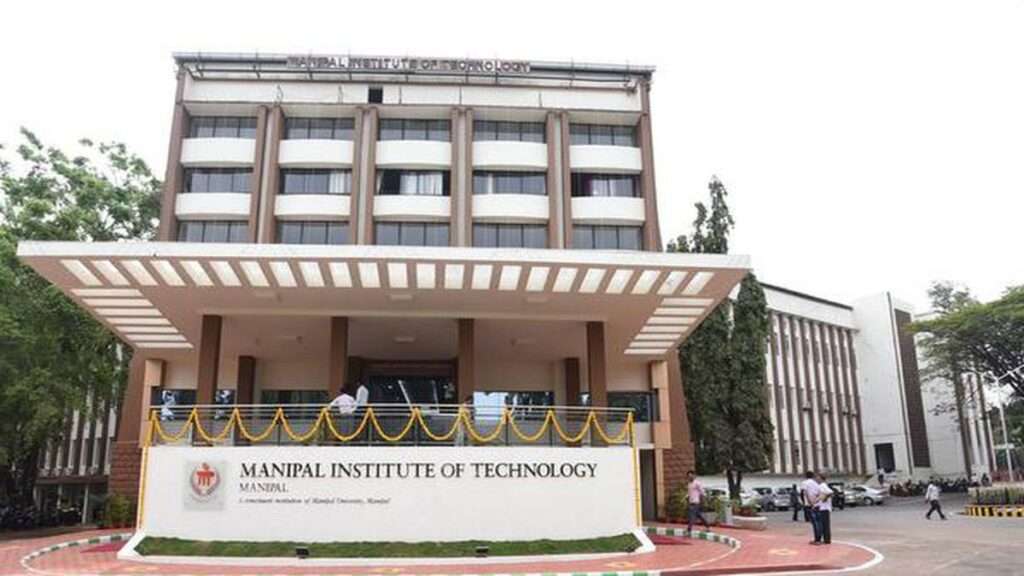The placement process is very competitive. However, the placement cell at MIT has a good track record of placing students in good jobs. In the academic year 2022-23, the average salary package for students placed through campus placements was INR 12.59 LPA.The placement cell has a strong network of companies and is constantly working to improve the placement opportunities for students.

Here are some of the key features of the placement process at MIT 2023:
- The placement process begins in the seventh semester of the course.
- The placement cell invites companies from a variety of industries for campus placements.
- The placement cell also conducts pre-placement training for the students.
- The placement process is very competitive.
- The placement cell at MIT has a good track record of placing students in good jobs.
Factors for Strong Placement Record
- Academic reputation: MIT is a well-established institute with a good academic reputation. This attracts good companies to the campus for placements.
- Strong placement cell: The placement cell at MIT is very active and has a good track record of placing students in good jobs. The cell works closely with the industry to identify potential employers and to secure placement opportunities for the students.
- Industry-oriented curriculum: The curriculum at MIT is industry-oriented. This means that it is designed to meet the needs of the industry. This makes students more employable after graduation.
- Practical training: MIT emphasizes practical training. This means that students get hands-on experience in the latest technologies. This makes them more marketable to employers.
- Strong alumni network: MIT has a strong alumni network. This network can help students get jobs after graduation.
Placement Process of MIT
- Pre-placement Talk (PPT): Companies visiting MIT for placements usually start with a Pre-placement Talk. This is an informative session where representatives from the company give a presentation about their organization, the roles they’re offering, and what they’re looking for in potential candidates.
- Registration and Eligibility Criteria: Students interested in participating in the placement process need to register with the Placement Cell of MIT. They also need to meet the eligibility criteria set by both the institute and the recruiting companies.
- Aptitude Tests: Some companies may conduct aptitude tests to assess candidates’ quantitative, analytical, and logical reasoning abilities. These tests can be written or online.
- Technical Tests: For technical roles, companies might conduct tests to evaluate candidates’ domain-specific knowledge and skills. This could include coding tests, quizzes, or other technical assessments.
- Group Discussions (GD): In this round, candidates are given a topic to discuss within a group. It assesses their communication skills, teamwork, leadership qualities, and ability to articulate their thoughts.
- Technical Interviews: Candidates who pass the written tests may proceed to technical interviews. These interviews focus on assessing the candidate’s technical knowledge, problem-solving abilities, and understanding of relevant concepts.
- HR Interviews: This round focuses on evaluating the candidate’s soft skills, communication abilities, and overall fit with the company’s culture.
- Technical Presentation or Coding Round: Some companies, especially in the IT and software development sectors, may ask candidates to present a technical topic or solve a coding problem during the interview process.
- Offer Letters: Once a candidate successfully navigates through all the rounds and meets the company’s criteria, they receive an offer letter from the company.
- Acceptance and Joining: After receiving an offer letter, the candidate can choose to accept or decline the offer. If accepted, they will join the company as per the agreed-upon terms.
Top Recruiters at MIT
Placement of MIT
| Particulars | Statistics (2022) | Statistics (2023) |
|---|---|---|
| Total students | 3,522 | 3,390 |
| Companies participated | 500+ | 600+ |
| Offers made | 10,000+ | 12,000+ |
| Placement percentage | 92.9% | 95% |
Packages of MIT
| Stream | Highest Package (LPA) | Average Package (LPA) | Lowest Package (LPA) |
|---|---|---|---|
| Computer Science and Engineering | 54.75 | 13.16 | 6.0 |
| Electrical and Electronics Engineering | 50.00 | 12.25 | 5.5 |
| Mechanical Engineering | 45.00 | 11.50 | 5.0 |
| Civil Engineering | 40.00 | 10.75 | 4.5 |
| Chemical Engineering | 35.00 | 10.00 | 4.0 |
| Biotechnology | 30.00 | 9.25 | 3.5 |
Frequently Asked Questions
MIT provides extensive support for placements. This includes conducting mock interviews, offering technical and soft skills training, organizing workshops, and facilitating interactions with industry professionals through seminars and guest lectures.
Yes, MIT actively collaborates with various companies to provide internship opportunities for students. These internships serve as valuable experiences that can enhance a student’s skill set and make them more competitive during final placements.
MIT attracts a diverse range of companies from various sectors including IT, electronics, software development, consulting, and more. The list of visiting companies may vary each year, and students are provided with information about the participating companies in advance.
 60 minutes of Duration
60 minutes of Duration 180 Questions
180 Questions Instant Report
Instant Report 4 Dimensions
4 Dimensions 500+ Career Options
500+ Career Options 1M+ Test Taken
1M+ Test Taken




